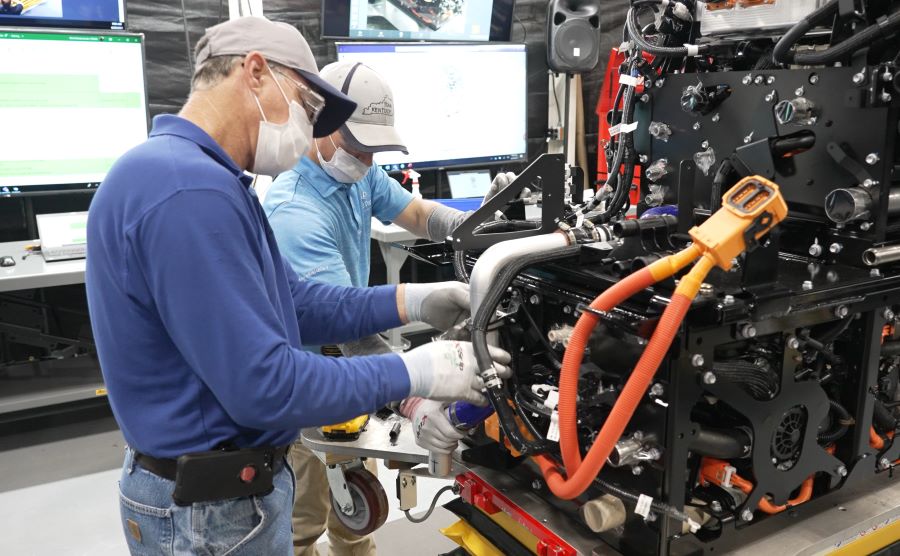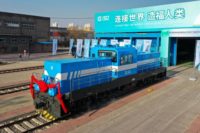AACHEN, Germany—Traditionally, fuel cell manufacturing has been a complex, slow process. To address the issue, engineers at the Fraunhofer Institute for Production Technology (IPT) have developed a continuous assembly line that automatically makes fuel cell components and then assembles them into a stack. The goal is to produce fuel cells on an industrial scale at competitive prices.
A stack is the heart of a fuel cell. It consists of hundreds of bipolar plates arranged on top of one another.
Gas and air are pulled through an intricate system of millimeter-thick channels in the bipolar plates; hydrogen is fed in at one end and water produced by the chemical reaction in the stack is fed out at the other.
However, producing these bipolar plates is challenging. The plates are only about 100 microns thick and tend to resemble a film rather than a plate. They must be moved very carefully to make sure nothing gets creased or wrinkled.
First, presses are used to emboss channel structures onto the plate blanks. They are then coated under vacuum to reduce their electrical resistance and make them more corrosion-proof. A finished bipolar plate consists of a left half and a right half, with the fine channel system between. The two halves then need to be welded together with a high degree of precision. There are also multiple cleaning steps.
“We need nonstop production lines that are able to process components in cycles lasting just seconds,” says Christoph Baum, Ph.D., managing director of Fraunhofer IPT. “Right now, various components are manufactured by various producers and then assembled to create the fuel cell.
“Production steps, such as forming, cleaning, coating and joining the fuel cell components, are spatially separated from one another in various machine islands,” explains Baum. “All in all, the logistics within production facilities are complex. Parts have to be picked up, placed and buffered multiple times.”
Fraunhofer IPT engineers developed a production line that enables special pick-and-place handling devices to handle all components and assemble bipolar plates in a fluid process.
“Because some process steps are faster than others, the challenge is to optimize the flow as a whole so that neither jams nor waiting times occur,” says Baum. “The blank pressing process, referred to as deep drawing, is done in just about 1 second, while the deposition of the protective layer takes much longer.
“We are predicting that hundreds of thousands of bipolar plates will be needed for the hydrogen economy of the future,” Baum points out. “For this reason, we are striving to achieve a throughput of at least one bipolar plate per second across all plants.”
In the CoBIP project (continuous roll-to-roll production of bipolar plates for fuel cells), Fraunhofer IPT engineers developed equipment for processing bipolar plates in a film strip off the roll. The film strip passes through the machine and through all process steps—from the blank to the forming, the deposition of the protective coating to the cleaning through to the laser welding process.
“Only at the very end are the bipolar plates cut off the strip and isolated,” explains Baum. “This continuous process from the roll to the finished item will save a number of handling steps.”
“The plant is designed to be so flexible that [companies] are able to exchange and test individual production modules at will,” says Baum. “We are providing manufacturers with a tool they can use to design and optimize a nonstop production line to suit their requirements. A high cycle rate allows several devices to operate in parallel or to be connected in series, such as lasers for joining the plate halves.
“When it comes to fuel cells, the hurdle of industrial production scaling should not be underestimated,” warns Baum. “Similar to the situation with batteries, transferring systems from the laboratory to mass production is a complex matter.”



